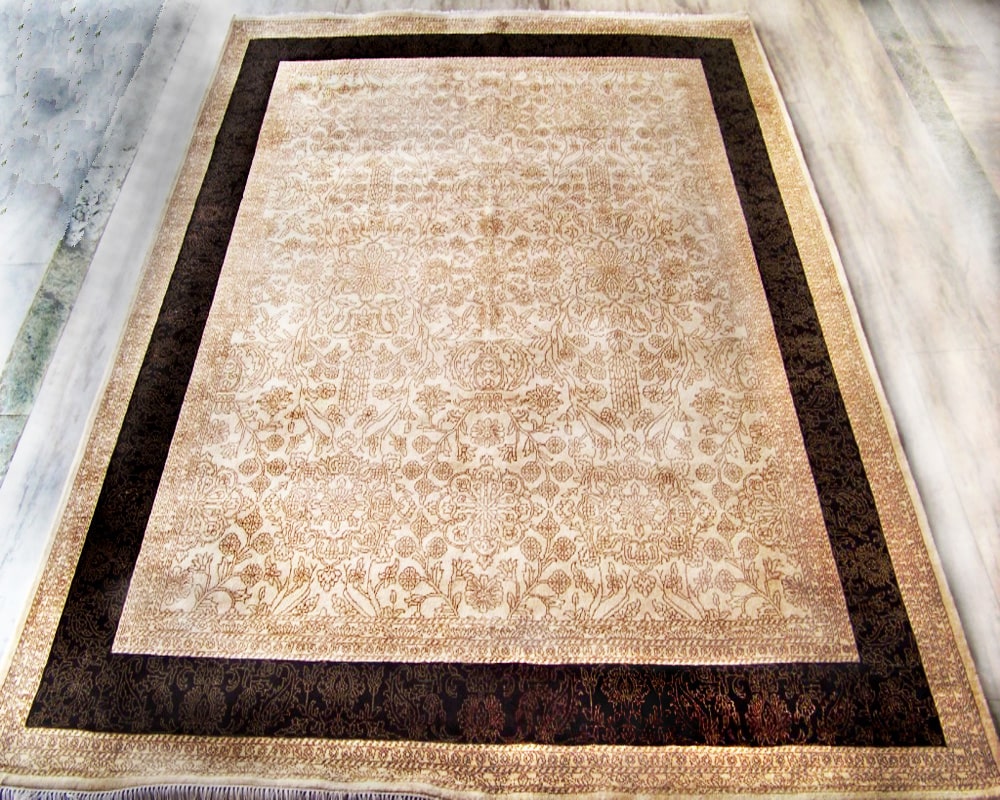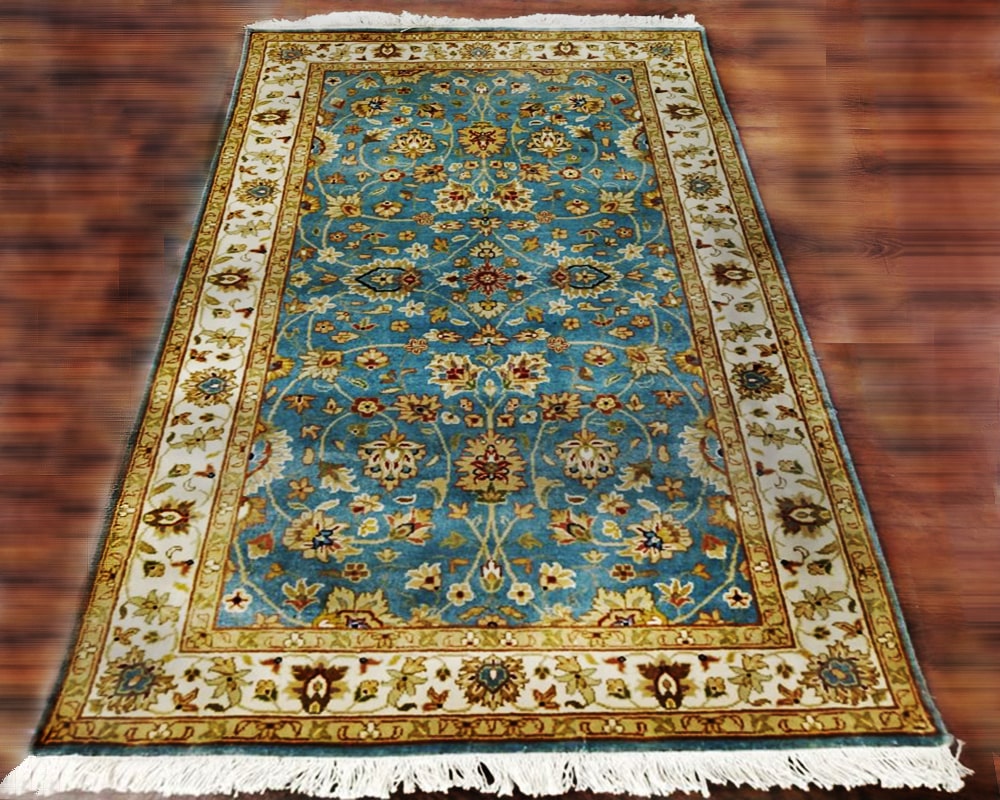When it comes to luxury, tradition, and craftsmanship, Persian hand-knotted carpets stand above all. These masterpieces are not just floor coverings; they are works of art, woven with stories, culture, and precision. India, known for its centuries-old weaving heritage, has become one of the leading manufacturers and exporters of Persian-style hand-knotted carpets.

If you are searching for a trusted Persian hand-knotted carpet manufacturer in India, this guide will help you understand everything — from origin to types, weaving process, designs, materials, and maintenance tips.
What Is a Persian Hand-Knotted Carpet?
A Persian hand-knotted carpet is a rug woven completely by hand using a special knotting technique that originated in ancient Persia (modern-day Iran). Each knot is tied individually on a loom, creating incredible detailing and durability.
These carpets are admired for:
-
Intricate designs and motifs
-
Natural wool and silk materials
-
Long-lasting quality
-
Artistic and cultural value
Unlike machine-made rugs, every Persian hand-knotted carpet is unique and takes months or even years to complete.
Why India Is Famous for Persian Hand-Knotted Carpets
India has been producing hand-knotted rugs for centuries — especially in regions like Varanasi, Jaipur, Bhadohi, Agra, and Kashmir. Inspired by Persian designs, Indian artisans have mastered the art of knotting with perfection.
Key Reasons:
-
Skilled artisans: Generations of weavers trained in Persian weaving techniques.
-
High-quality materials: Pure New Zealand wool, silk, and cotton.
-
Affordable pricing: Compared to Iran or Turkey, Indian Persian carpets are more budget-friendly with the same premium quality.
Global export quality: Indian manufacturers supply to the USA, UK, UAE, Qatar, and Europe.
How Persian Hand-Knotted Carpets Are Made
The process of making a hand-knotted Persian carpet involves patience, skill, and creativity. Let’s understand step-by-step:
-
Design Creation:
Traditional motifs are drawn by professional designers. Common patterns include medallions, floral vines, and geometric borders. -
Material Preparation:
Wool or silk yarns are dyed using natural vegetable colors for longevity and shine. -
Weaving Process:
Each knot is tied manually on a vertical loom. A single carpet can contain 200–900 knots per square inch (KPSI).-
Higher knot count = finer detail & higher value.
-
-
Washing & Finishing:
After weaving, carpets are washed, stretched, and trimmed to enhance texture and sheen. Quality Check:
Each rug undergoes a strict quality inspection to ensure perfection before export.
Types of Persian Hand-Knotted Carpets
There are many famous types of Persian rugs based on designs and weaving styles. Some popular ones made by Indian manufacturers include:
-
Kashan Rugs: Known for central medallion patterns and floral motifs.
-
Tabriz Rugs: Fine knot density with elegant designs.
-
Isfahan Rugs: Made with silk and wool blend for luxurious feel.
-
Heriz Rugs: Bold geometric patterns and tribal influence.
-
Nain Rugs: Delicate cream and blue color combinations.
Indian manufacturers replicate these styles while maintaining their own regional artistry.
Sizes Available in Persian Hand-Knotted Carpets
You can find Persian rugs in various sizes to fit different spaces —
| Area | Common Sizes (in feet) |
|---|---|
| Small Rugs - | 2x3, 3x5 |
| Medium Rugs - | 4x6, 5x8, 6x9 |
| Large Rugs - | 8x10, 9x12, 10x14 |
| Custom Size - | Available on request |
Indian manufacturers also offer custom-made Persian carpets tailored to your room size, color palette, and design preferences.
Why Choose a Persian Hand-Knotted Carpet
1️⃣ Durability
Hand-knotted Persian rugs can last for 50–100 years if properly maintained.
2️⃣ Artistic Value
Every carpet is a masterpiece — no two pieces are identical.
3️⃣ Investment Piece
Over time, authentic Persian carpets appreciate in value.
4️⃣ Eco-Friendly
Made from natural fibers and dyes — no synthetic chemicals.
5️⃣ Versatile Décor
Perfect for luxury homes, hotels, offices, and palaces.
How to Identify an Original Persian Hand-Knotted Carpet
-
Check the Back Side: You can see each knot clearly on the back.
-
Touch & Feel: Real wool or silk feels soft and natural.
-
Design Symmetry: Slight imperfections show it’s handmade, not machine-made.
Label or Certificate: Authentic carpets come with origin details from manufacturers.
Maintenance Tips for Persian Hand-Knotted Carpets
To keep your Persian carpet looking beautiful for decades:
-
Vacuum regularly (gentle suction only).
-
Avoid direct sunlight to prevent fading.
-
Rotate the carpet every few months.
-
Professional cleaning every 2–3 years.
Use carpet pads to prevent slipping and wear.
Leading Persian Hand-Knotted Carpet Manufacturers in India
India has many reputed manufacturers specializing in Persian rugs, such as:
-
Genie Carpet Manufacturers (Bhadohi, India)
Known for their premium Persian hand-knotted wool and silk rugs, exporting to USA, UK, Saudi Arabia, UAE, and Qatar.
These companies offer custom designs, luxury finishing, and export-quality rugs for homes, hotels, and interior designers worldwide.
Frequently Asked Questions (FAQ)
Q1. What makes Persian hand-knotted carpets so expensive?
A: The high knot density, natural materials, and months of manual labor make them valuable.
Q2. Can I order custom size Persian rugs from India?
A: Yes, top manufacturers offer customized rugs based on your color, pattern, and size needs.
Q3. What is the difference between hand-knotted and hand-tufted rugs?
A: Hand-knotted rugs are made completely by hand using knots, while hand-tufted rugs are partially machine-assisted and less durable.
Q4. How long does it take to make one Persian hand-knotted carpet?
A: Depending on the size and complexity, it can take anywhere from 3 months to 1 year.
Q5. Are Indian Persian rugs as good as Iranian ones?
A: Yes, Indian Persian-style rugs match the quality of Iranian ones at more affordable prices.
A Persian hand-knotted carpet is more than just a piece of home décor — it’s a symbol of elegance, art, and heritage. Whether you’re decorating a modern home or a luxury hotel, these rugs add warmth, culture, and sophistication.
India, with its skilled artisans and global reputation, continues to be a trusted destination for Persian hand-knotted carpet manufacturing and export. If you want authenticity, craftsmanship, and long-lasting beauty — choose an Indian Persian rug manufacturer you can trust.

Comments
Post a Comment